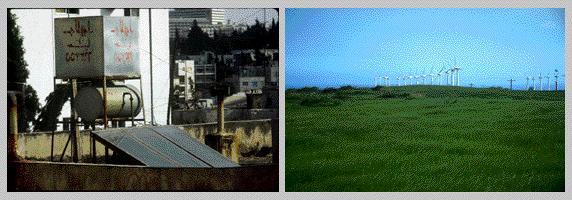


Climate change could potentially affect the magnitude of the resource
available (increased cloudiness could affect the use of solar collectors such as this one in
Amman, Jordan) as well as the feasibility of using the resource (changes in predominant wind
directions could affect these wind energy systems in Southpoint, Hawaii, because of their
fixed orientation).

In what ways might climate change affect renewable energy systems? Do any of these types of changes look important enough to warrant additional analysis?

Climate change can affect the renewable energy resource itself, the equipment used to capture it, or the value that society places on energy yields relative to other uses of renewable resources. A review of technology descriptions and operating experience revealed that climate change could reduce or in some cases increase energy yields from equipment installed before the change. Estimating the magnitude and type of change for each renewable energy system would require examining specific climate change scenarios.

Hillsman, E. L. and C. H. Petrich. 1995. Potential vulnerability of renewable energy systems to climate change. ORNL-6802. Prepared for U.S. Department of Energy Office of Environmental Analysis. Oak Ridge National Laboratory, Oak Ridge, Tenn. (in revision).
Integrated Assessment Briefs. 1995. ORNL/M-4227. Oak Ridge National Laboratory, Oak Ridge, TN.